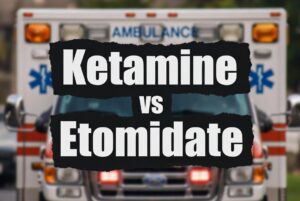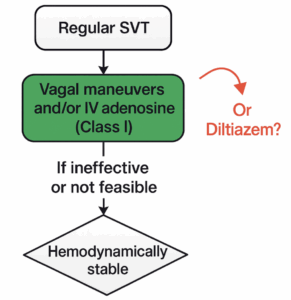Article Summary by Sarah Fabiano, MD, FACEP, FAAEM
Background
This study compared the effectiveness/harms of opiates versus non-opiates for moderate and severe acute pain in the prehospital setting. Pain overall is undertreated (up to 43% in adults and 83% in pediatrics). Side effects, adverse effects, potential for misuse should all be considered in treatment of pain.
The systematic review included studies that compared two of the following medications: opioids (fentanyl or morphine) and non-opioids (acetaminophen, ketamine, nitrous oxide/oxygen, or NSAIDs. The combination of an opioid with ketamine compared with an opioid alone was also included in the review. Outcomes included:
- pain
- time to analgesia
- memory of pain
- hypotension
- respiratory depression
- mental status changes
- vital signs
- nausea vomiting
- emergence delirium
Opioids versus ketamine
Most of the evidence was low strength, but opioids seemed to have less adverse events than ketamine, less dizziness than ketamine, and more respiratory depression. In patients that had an inadequate response to initial analgesia—ketamine reduced pain more than additional opioids and was also quicker to reduce pain than opioids.
Opioids plus ketamine versus opioids alone
At 15 and 30 minutes-opioids plus ketamine reduced pain more, but not at 60 min. There is insufficient evidence for the adverse events.
Opioids versus acetaminophen
The evidence is low strength. In the comparison between IV opioids and IV APAP and there was no clinically important difference in time to analgesia. Opioids may cause more adverse events—dizziness, but not enough strength regarding hypotension or respiratory depression.
Opioids versus Nitrous Oxide
There was not enough evidence to make a conclusion.
Opioids versus NSAIDS
There no evidence of clinically important difference in reduction of pain scores at 30, 60 minutes. Opioids may cause more adverse events and drowsiness.
Takeaways:
To conclude, opioids are not different than Ketamine, APAP, and NSAIDS in reducing acute pain in the prehospital setting. Combined administration of opioid and ketamine could reduce acute pain, but harms are uncertain. More research is needed in prehospital pain control.
Editing by James Li, MD NAEMSP Blog Editor



